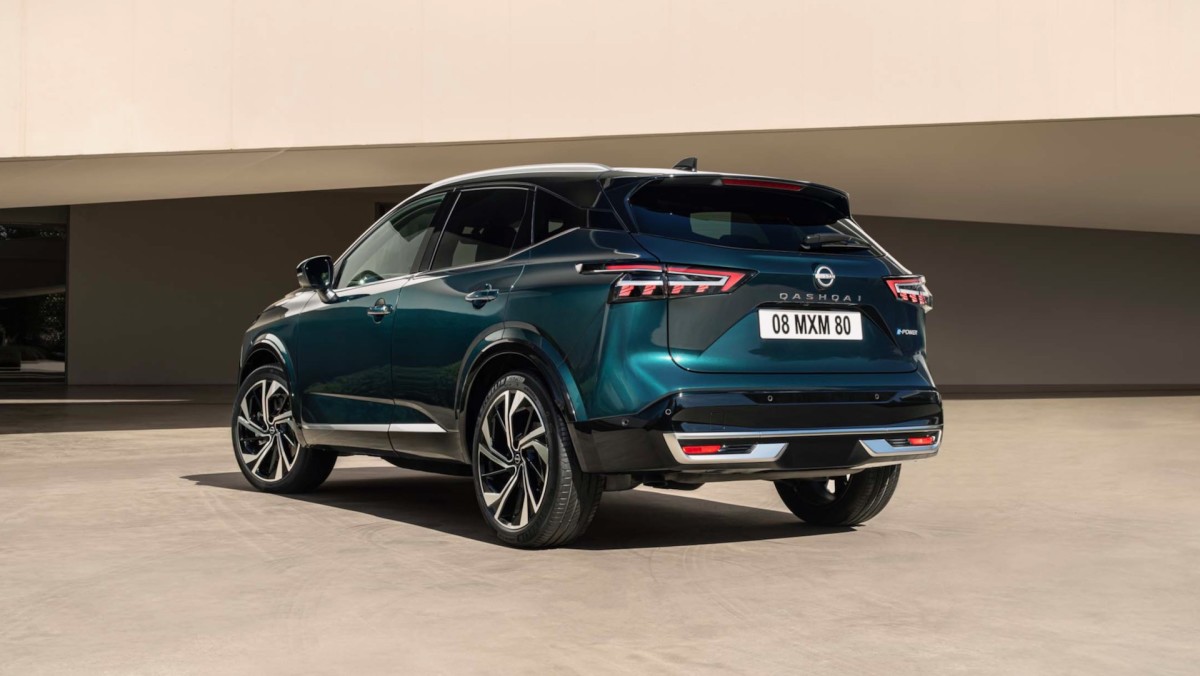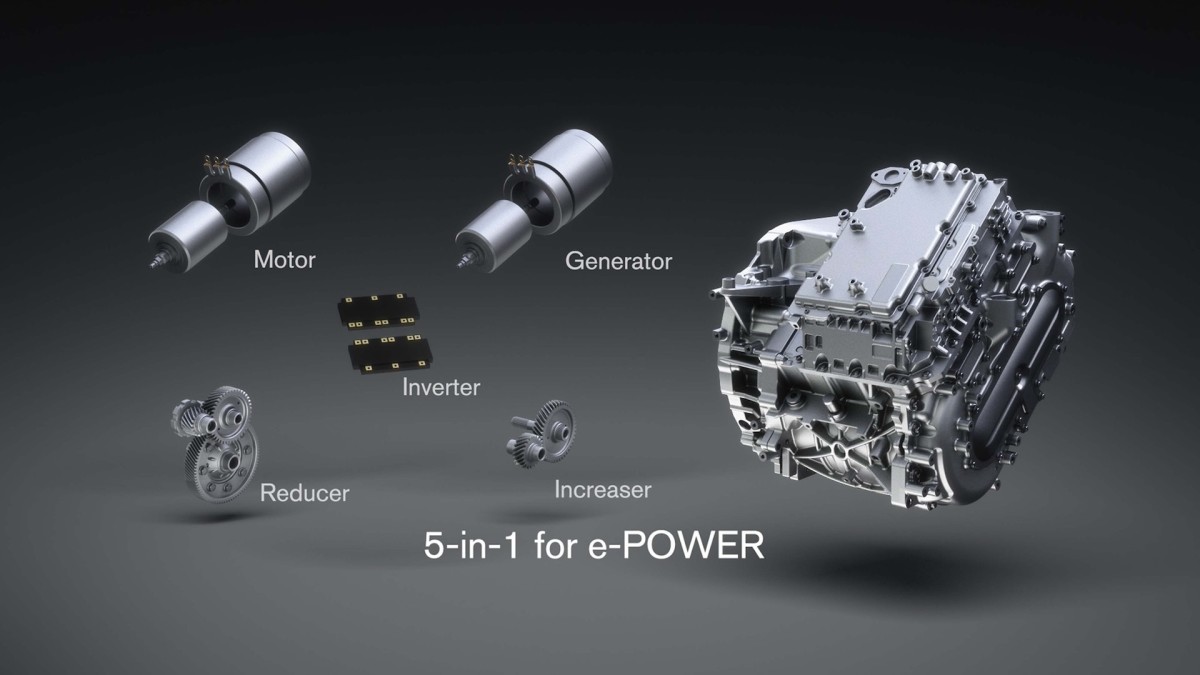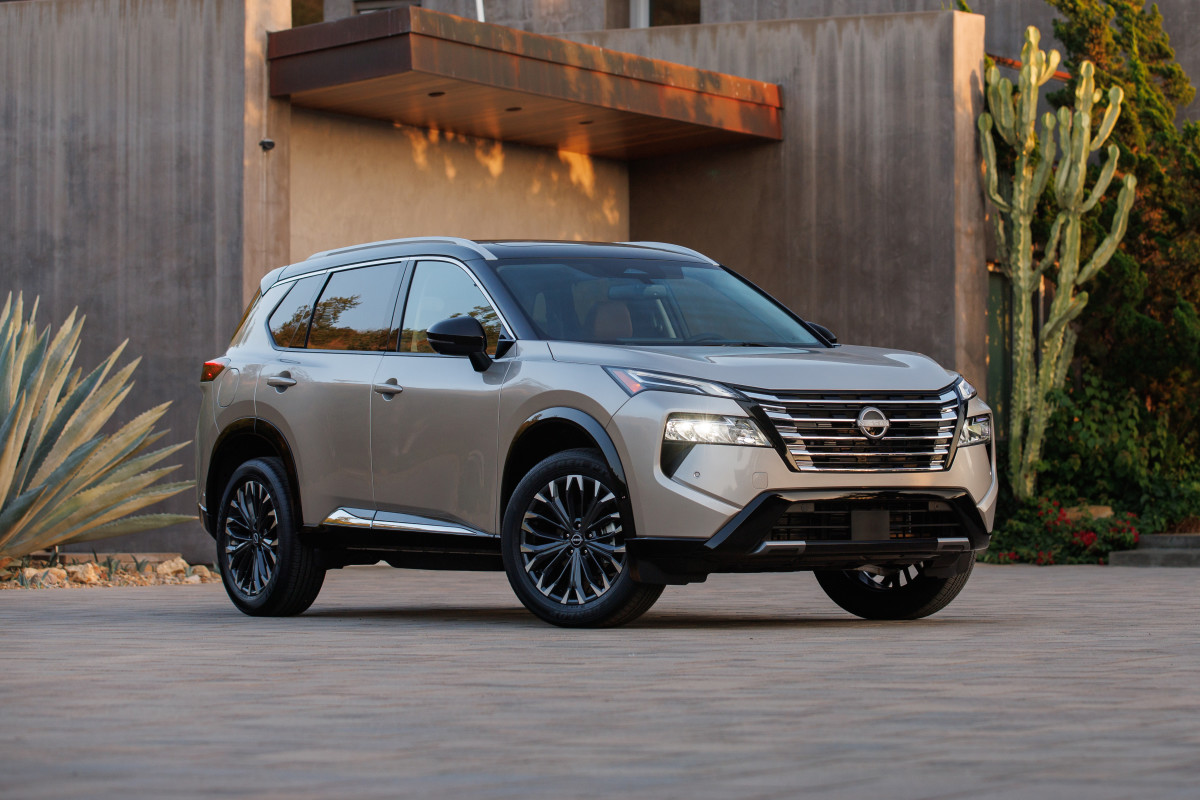Nissan Bets on Simpler, Smoother Hybrid Tech
Hybrids are ubiquitous, but none operate quite like those with Nissan’s e-Power system, the third generation of which just debuted in the redesigned Qashqai crossover for the European market, but is expected to reach the United States in 2026 in the next-generation Rogue.
While most automakers opt for a parallel hybrid system that allows both an internal-combustion engine and electric motors to directly power the wheels, e-Power is a series hybrid system, in which the combustion engine acts purely as a generator, with electricity providing all of the motive power. That means instant response to throttle inputs, as in an EV, and is mechanically simpler than other hybrid systems, Nissan notes.
Numerous Improvements
Nissan
View the 3 images of this gallery on the
original article
A key update for the third-generation e-Power system is the integration of an electric motor, generator, inverter, and a reduction gear into a single unit that’s more compact and lighter than the previous packaging, Nissan said in a press release. Battery capacity is unchanged from the previous Qashqai hybrid, at 2.1 kilowatt-hours.
The new Qashqai hybrid also retains a 1.5-liter turbocharged three-cylinder engine, but Nissan made a few changes to boost efficiency, power, and refinement. Thermal efficiency has improved to 42%, meaning more of the fuel volume actually gets translated into energy for turning the wheels. Low-speed performance in particular has been approved, according to Nissan, while a larger turbo lets the engine operate 200 rpm lower at highway speeds, reducing noise (overall cabin noise is down to 56 decibels, Nissan claims). The automaker says these changes make the previous engine’s variable-compression-ratio tech redundant.
Nissan estimates 62 mpg on the European WLTP testing cycle, which is generally more optimistic than the U.S. EPA testing cycle. Output improves by about 15 horsepower, to 202 hp. That’s about the same as the 201 hp rating of the U.S.-spec 2025 Nissan Rogue, which uses a variable-compression turbo-three engine without a hybrid system.
Expect To See e-Power In The U.S. Soon
Nissan
Built in the United Kingdom, the redesigned Qashqai is scheduled to reach European markets in September 2025. It’s not likely to reach the U.S., but Nissan confirmed last year that it planned to launch e-Power in the U.S. and Canada by the end of fiscal year 2026. Earlier this year, the automaker said the Rogue would get the third-generation e-Power system, along with the Qashqai and a minivan.
While the Rogue could use a hybrid option, as most of its U.S.-market rivals already offer one, e-Power still comes with some questions. Series hybrids have struggled with efficiency and vibration issues at the steady-state highway speeds that are common in the U.S. That’s why other automakers have avoided this tech (Honda’s two-motor hybrid system comes close, but still allows the engine to directly drive the wheels in certain situations) and why Nissan has hesitated to bring e-Power to the U.S.
Nissan launched the first-generation e-Power system in Japan in 2016, on the Note hatchback. As of last October, it claimed to save sold more than 1.5 million vehicles with the system, and that it was available in 68 markets. It’s been promising U.S. sales for most of that span, even announcing plans to make e-Power the default powertrain tech for its Infiniti luxury brand. But those plans were canceled in 2021.
Rogue Plug-In Hybrid Too

Nissan
Nissan’s technical skills and tenacity shouldn’t be underestimated, however. It made variable-compression engines work even after other automakers had given up on the concept, after all. And Nissan likely has a backup plan for the Rogue as well.
Car and Driver reported last October that a Nissan Rogue plug-in hybrid would likely arrive for the 2026 model year, borrowing tech from its Mitsubishi Outlander platform-mate. The plug-in hybrid is expected to be sold alongside the Rogue e-Power hybrid, helping the Rogue achieve parity with rivals like the Hyundai Tucson, Kia Sportage, and Toyota RAV4, which all offer both hybrid and plug-in hybrid powertrain options.